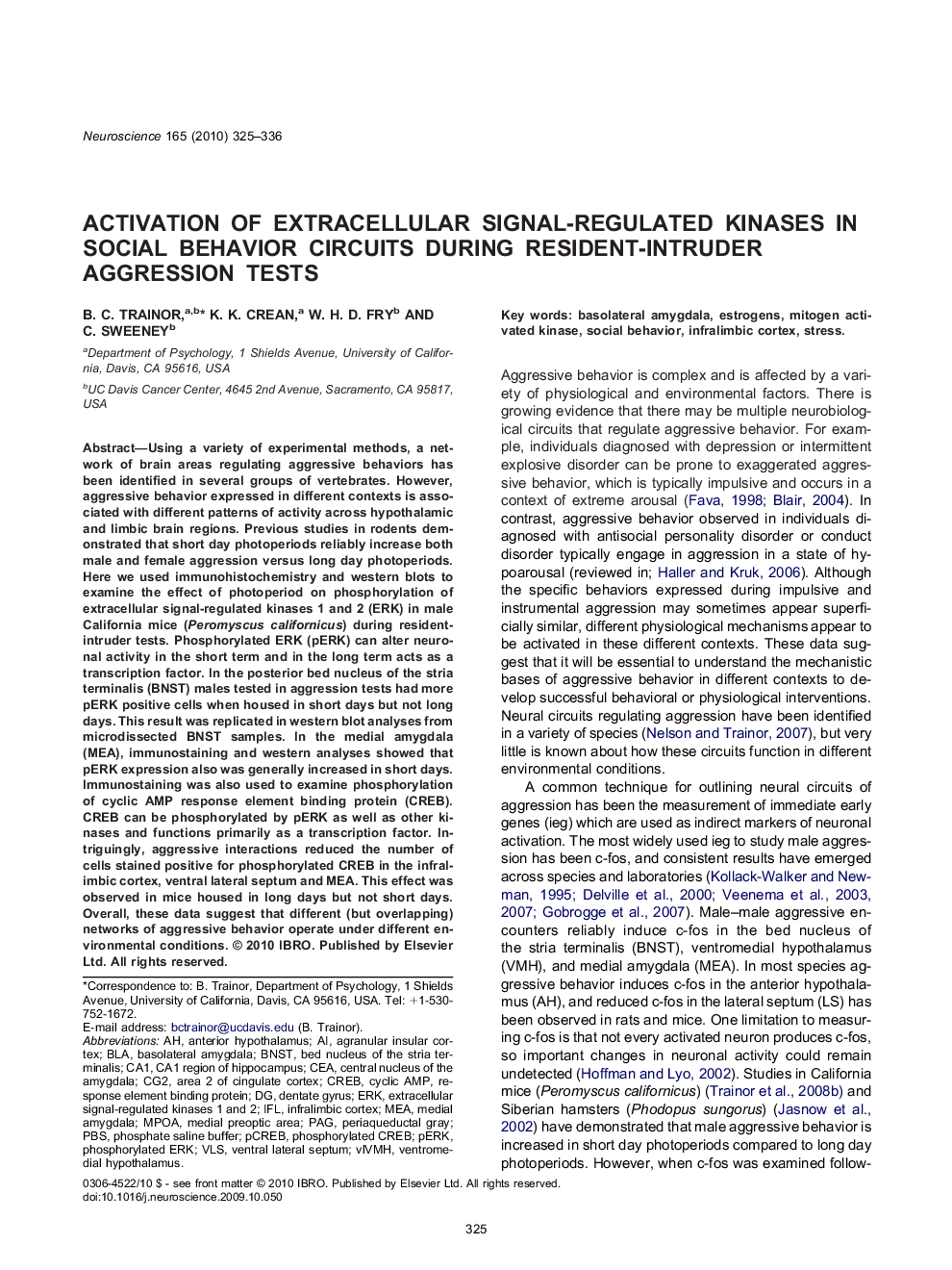| کد مقاله | کد نشریه | سال انتشار | مقاله انگلیسی | نسخه تمام متن |
|---|---|---|---|---|
| 4339688 | 1295764 | 2010 | 12 صفحه PDF | دانلود رایگان |

Using a variety of experimental methods, a network of brain areas regulating aggressive behaviors has been identified in several groups of vertebrates. However, aggressive behavior expressed in different contexts is associated with different patterns of activity across hypothalamic and limbic brain regions. Previous studies in rodents demonstrated that short day photoperiods reliably increase both male and female aggression versus long day photoperiods. Here we used immunohistochemistry and western blots to examine the effect of photoperiod on phosphorylation of extracellular signal-regulated kinases 1 and 2 (ERK) in male California mice (Peromyscus californicus) during resident-intruder tests. Phosphorylated ERK (pERK) can alter neuronal activity in the short term and in the long term acts as a transcription factor. In the posterior bed nucleus of the stria terminalis (BNST) males tested in aggression tests had more pERK positive cells when housed in short days but not long days. This result was replicated in western blot analyses from microdissected BNST samples. In the medial amygdala (MEA), immunostaining and western analyses showed that pERK expression also was generally increased in short days. Immunostaining was also used to examine phosphorylation of cyclic AMP response element binding protein (CREB). CREB can be phosphorylated by pERK as well as other kinases and functions primarily as a transcription factor. Intriguingly, aggressive interactions reduced the number of cells stained positive for phosphorylated CREB in the infralimbic cortex, ventral lateral septum and MEA. This effect was observed in mice housed in long days but not short days. Overall, these data suggest that different (but overlapping) networks of aggressive behavior operate under different environmental conditions.
Journal: Neuroscience - Volume 165, Issue 2, 20 January 2010, Pages 325–336